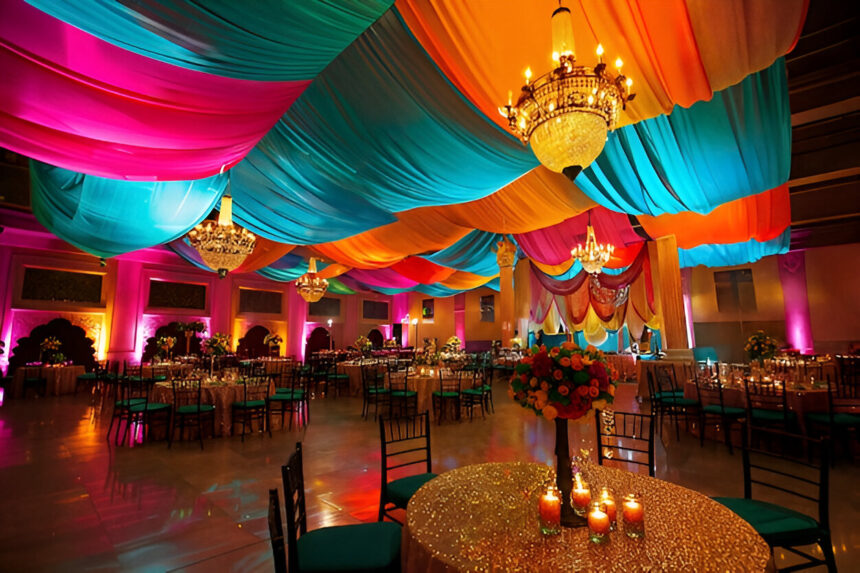When you think of a marquee, you might envision a grand entrance to a theater, a bustling outdoor market, or a glamorous event venue. Marquees have a rich history dating back centuries, evolving from simple shelters to elaborate structures that serve a variety of purposes. In this comprehensive guide, we will explore the origins of marquees, the different types available, and the modern applications that make them an indispensable feature in today’s world.
The Origins of Marquees
The term “marquee” is believed to have originated from the French word marquise, which referred to a large tent used by royalty or military commanders. These early marquees were often ornately decorated and served as temporary shelters for important gatherings or events. Over time, the concept of the marquee evolved to encompass a wide range of structures, from elegant party tents to practical outdoor shelters.
Marquees became popular in Europe during the 18th and 19th centuries, with the advent of traveling circuses, fairs, and theatrical performances. These temporary structures provided a versatile and customizable space for entertainment and social gatherings, making them a staple in the event industry.
Types of Marquees
Traditional Pole Marquees
One of the most recognizable types of marquees is the traditional pole marquee, characterized by its high peaks and classic silhouette. These marquees are supported by tall center poles and guy ropes, giving them a distinctive appearance that harkens back to their historical roots.
Pole marquees are popular for outdoor weddings, festivals, and corporate events, offering a spacious and elegant setting for guests to enjoy. With their customizable layouts and decorative options, pole marquees can be tailored to suit any occasion or theme.
Frame Marquees
Frame marquees are a modern variation that eliminates the need for center poles, making them ideal for events where unobstructed space is essential. These marquees use a sturdy framework of aluminum or steel to support the structure, providing greater flexibility in layout and design.
Frame marquees are commonly used for trade shows, exhibitions, and large-scale events where a clear span and open floor space are required. They offer versatility in setup and can accommodate a wide range of configurations to meet the specific needs of the event.
Stretch Tents
Stretch tents are a contemporary take on the traditional marquee, featuring a stretchable fabric canopy that can be manipulated to create unique shapes and designs. These versatile structures are popular for outdoor events that require a modern and stylish aesthetic, such as music festivals, art installations, and private parties.
Stretch tents can be erected in various settings, including uneven terrain or urban spaces, making them a flexible choice for outdoor gatherings. Their dynamic appearance and customizable sizes make them a standout option for events seeking a distinctive and eye-catching ambiance.
Modern Applications of Marquees
In today’s fast-paced world, marquees have found a multitude of applications beyond traditional events and gatherings. From temporary retail spaces to emergency shelters, marquees offer a practical and adaptable solution for a wide range of needs.
Event Venues
Marquees continue to be a popular choice for event planners and organizers seeking a versatile and customizable venue option. Whether hosting a wedding, corporate function, or community festival, marquees provide a blank canvas that can be transformed to suit any theme or style.
With advancements in technology and design, modern marquees offer a host of amenities, including climate control, lighting options, and sound systems. These features enhance the overall guest experience and ensure that events run smoothly, regardless of the weather or location.
Pop-Up Shops
Retailers and brands are increasingly turning to marquees as a cost-effective and mobile solution for pop-up shops and temporary storefronts. Marquees provide a visually striking storefront that can be easily transported and assembled in various locations, making them an ideal choice for marketing activations and product launches.
Pop-up shops in marquees offer a unique shopping experience for customers, creating a sense of exclusivity and urgency that drives sales and brand engagement. With the ability to customize the interior and exterior of the marquee, retailers can create a cohesive brand environment that resonates with their target audience.
Emergency Shelters
During times of crisis or natural disasters, marquees play a crucial role in providing temporary shelter and relief to those in need. Organizations such as the Red Cross and other humanitarian groups utilize marquees as emergency response structures, offering a safe and secure space for displaced individuals and families.
Marquees are quick to deploy and can be set up in a variety of environments, including remote areas or disaster zones. With their durable construction and ability to withstand inclement weather, marquees serve as a vital resource for emergency responders and relief efforts around the world.
Conclusion
In conclusion, the world of marquees is a fascinating blend of history, innovation, and practicality. From their royal origins to their modern-day applications, marquees have evolved into versatile structures that cater to a wide range of needs and industries. Whether hosting a lavish wedding, showcasing a new product, or providing emergency shelter, marquees continue to play a vital role in shaping the landscapes of events and communities worldwide. As we look to the future, the marquee remains a timeless symbol of elegance, adaptability, and resilience in an ever-changing world.





